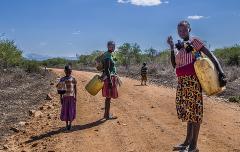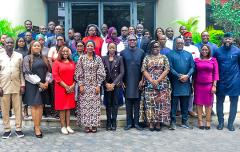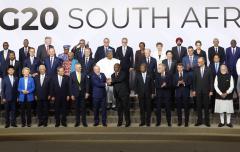Interpreting the Data: Tracking SDG7 Energy Progress Report
Despite encouraging signs of progress, we are not on track to meet Sustainable Development Goal 7 which calls for universal access to sustainable energy by 2030. That’s according to the Tracking SDG7: Energy Progress Report, a joint report from the International Energy Agency, International Renewable Energy Agency, United Nations Statistics Division, World Bank and World Health Organization.
The report, launched at the Sustainable Energy for All Forum in Lisbon in May 2018, shows that we are moving in the right direction on most SDG7 targets, but nowhere near fast enough to achieve SDG7 by 2030. Here is a quick summary, based on the latest 2016 data in the report, on the varying rates of progress on energy efficiency, renewable energy and energy access, including access to electricity and access to clean cooking fuels and technologies.
The most disappointing findings by far are on access to clean cooking. Progress has been largely flat, although a handful of countries have made tangible gains. The absolute number of people without access to clean cooking has barely moved in over a decade, as population growth has outpaced gains. The pace of progress is most troubling in parts of Sub-Saharan Africa where the number of people without access to clean cooking rose by 275 million, meaning that in 2016, 860 million people – 70 percent of Africans – cannot cook cleanly.
This has devastating health consequences. According to new WHO data, about 7 million people die each year because of air pollution, more than half through using traditional biomass such as charcoal, or animal dung for cooking.
In contrast, there is progress in closing the gap in access to electricity. Globally just under 1 billion people are still without access to electricity, 100 million less than in 2014. More and more new connections are now coming from renewable, decentralized energy systems as well as electricity grid densification and expansion.
A number of countries are making rapid progress in electrification. These countries, from Kenya to Bangladesh can offer important lessons. Their success also begs the question, ‘What are they doing that is producing such results and what would others need to do to achieve the same success and rates of progress?’
A growing number of governments in developing countries are pursuing integrated energy plans that focus on both centralized and decentralized energy systems to bring electricity to both urban and rural areas more quickly and affordably. At the same time, there is increased focus on the need for tailored solutions to reach those who are traditionally left behind. The key to any progress however is a stable regulatory framework, a good business enabling environment and investment climate.
“We’re seeing a growing cohort of government ministers, CEOs and other leaders making strides with a political commitment to fast action and an embrace of new approaches. We can learn from them and replicate to achieve bigger scale,” said Rachel Kyte, CEO and Special Representative of the UN Secretary-General for Sustainable Energy for All.
Among other report findings, while there has been rapid expansion of renewable energy in the electricity sector, progress is not on track to achieve the SDG7 goal of doubling renewable energy in the global energy mix by 2030. Renewable energy’s share in the electricity sector grew to 22.8% in 2015, up from 20.9% in 2012. This trend is expected to continue as renewables continue becoming cost-competitive with other energy sources. However, the use of renewable energy in transport and heating lags behind. Scaling efforts there will be critical to achieving SDG7 and climate goals under the Paris Agreement.
Energy efficiency, the cornerstone of each country’s energy transition, poses significant cause for concern. Energy efficiency is expected to account for 40% of emissions reduction to limit climate change to 2 degrees. Yet, while it is encouraging to see the primary energy intensity of the global economy improving at a faster pace of 2.8% in 2015, the biggest decline since 2010, we are still far from improving at the rate needed to meet the goal of doubling the global rate of improvement in energy efficiency by 2030. There is much that countries can do on efficiency, even those with already low energy intensity levels. The benefits of efficiency are real, touching individuals and families across the world.
The report shows that we need to make step change improvements in energy efficiency and energy consumption from heating and cooling to transport and heavy industry. In transport the speed with which electric car use is moving is the spearhead of a rapid transformation that needs to include buses and light and heavy good vehicles, for short and long distances. The transformation made possible by electric mobility and digitalization at both the city and national levels aim realistically for big cuts in transport energy intensity.
The big picture takeaway from the Tracking SDG7 Energy Progress Report: We’re seeing inspiring examples of progress in countries that have married political commitment and time bound aggressive goal setting with policy reforms, investment climate improvement encouraging domestic as well as international investment. If more countries can do the same they can get on track to achieve the SDG7 targets.




